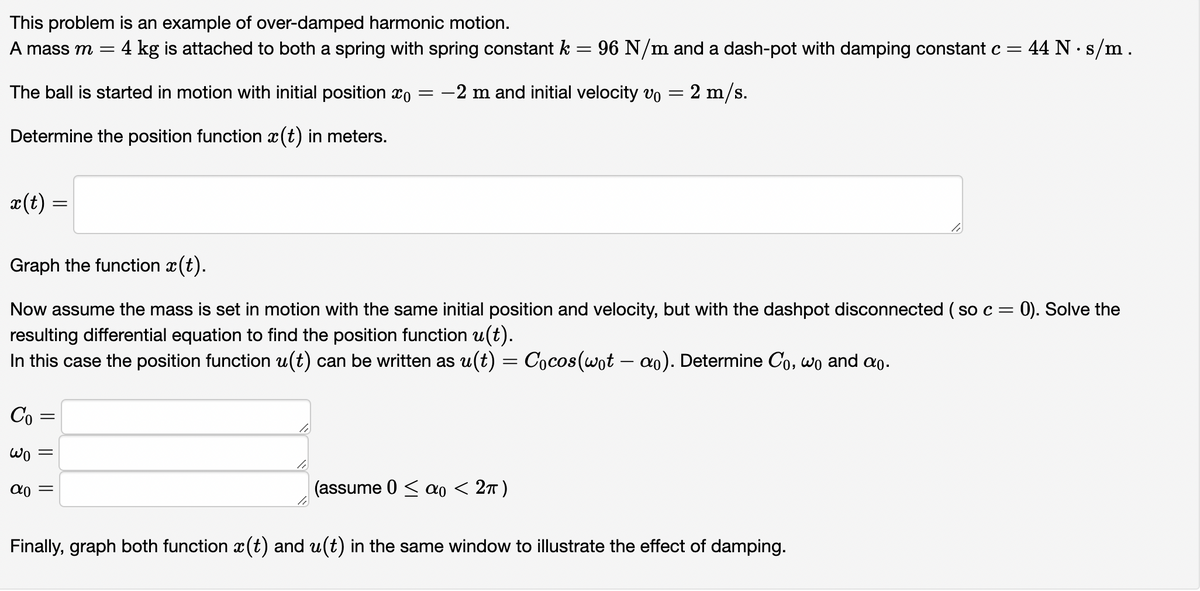This problem is an example of over-damped harmonic motion. A mass m = 4 kg is attached to both a spring with spring constant k = 96 N/m and a dash-pot with damping constant c = 44 N. s/m. The ball is started in motion with initial position=-2 m and initial velocity vo = 2 m/s. Determine the position function (t) in meters. x(t) = Graph the function (t). Now assume the mass is set in motion with the same initial position and velocity, but with the dashpot disconnected (so c = 0). Solve the resulting differential equation to find the position function u(t). In this case the position function u(t) can be written as u(t) = Cocos (wotao). Determine Co, wo and a. Co = wo = α0 = (assume 0≤ ao < 2π) Finally, graph both function (t) and u(t) in the same window to illustrate the effect of damping.
This problem is an example of over-damped harmonic motion. A mass m = 4 kg is attached to both a spring with spring constant k = 96 N/m and a dash-pot with damping constant c = 44 N. s/m. The ball is started in motion with initial position=-2 m and initial velocity vo = 2 m/s. Determine the position function (t) in meters. x(t) = Graph the function (t). Now assume the mass is set in motion with the same initial position and velocity, but with the dashpot disconnected (so c = 0). Solve the resulting differential equation to find the position function u(t). In this case the position function u(t) can be written as u(t) = Cocos (wotao). Determine Co, wo and a. Co = wo = α0 = (assume 0≤ ao < 2π) Finally, graph both function (t) and u(t) in the same window to illustrate the effect of damping.
Related questions
Question

Transcribed Image Text:This problem is an example of over-damped harmonic motion.
A mass m = 4 kg is attached to both a spring with spring constant k
=
The ball is started in motion with initial position o
=
Determine the position function (t) in meters.
x(t)
=
Co =
wo
αo
=
Graph the function x(t).
Now assume the mass is set in motion with the same initial position and velocity, but with the dashpot disconnected (so c = 0). Solve the
resulting differential equation to find the position function u(t).
In this case the position function u(t) can be written as u(t) = Cocos(wot — ao). Determine Co, wo and a.
-
=
96 N/m and a dash-pot with damping constant c = 44 N · s/m.
-2 m and initial velocity vo = 2 m/s.
(assume 0 < a < 2π)
10
Finally, graph both function ä(t) and u(t) in the same window to illustrate the effect of damping.
Expert Solution
This question has been solved!
Explore an expertly crafted, step-by-step solution for a thorough understanding of key concepts.
Step by step
Solved in 4 steps with 1 images
